
ANote Music is a platform that enables users to invest in music catalogues and earn monthly royalties. A usability test revealed that users were not fully engaging with the product, primarily due to a lack of understanding at multiple touchpoints, including the website, platform, and unclear email communication.
These findings led to a redesign of the website and platform. However, to optimize the overall user experience and comprehension, I considered it essential to conduct an in-depth analysis and redesign of the email communication that supports users throughout their journey.
My focus was to evaluate the existing materials from a UX perspective and provide actionable insights to the marketing and design team. The goal was to help them restructure content and improve messaging to enhance user understanding, engagement, and investment confidence.
User research and email data revealed five core issues limiting conversion and engagement:
To improve both the user journey and business outcomes, I defined the following objectives:
The improvements led to tangible performance gains:
I began with a deep analysis of the current email flow to identify friction points and content gaps. It became evident that aligning user expectations and understanding during their journey inside the platform was critical as the existing email workflow was no longer aligned with the user journey.
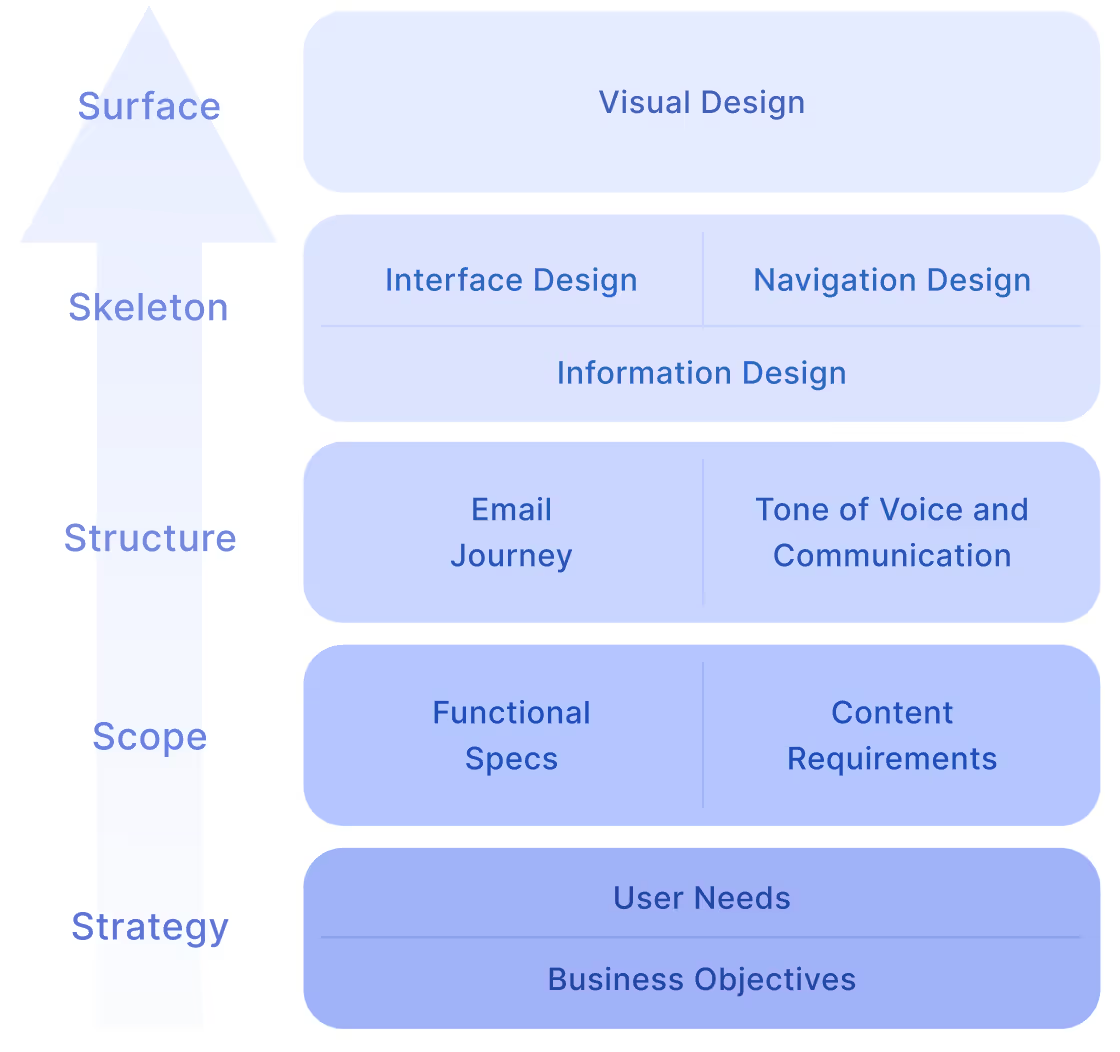
While this was a cross-functional initiative, my primary responsibility was focused on UX analysis of the platform’s AWS emails and marketing workflow emails. My contributions included:
For the project achievement, a close collaboration across departments was involved:
The user needs and business objectives were clear enough from the beginning of the project.
User Needs
Business Needs
I considered it essential to evaluate the initial situation in order to understand the issues & problems and not repeat them.
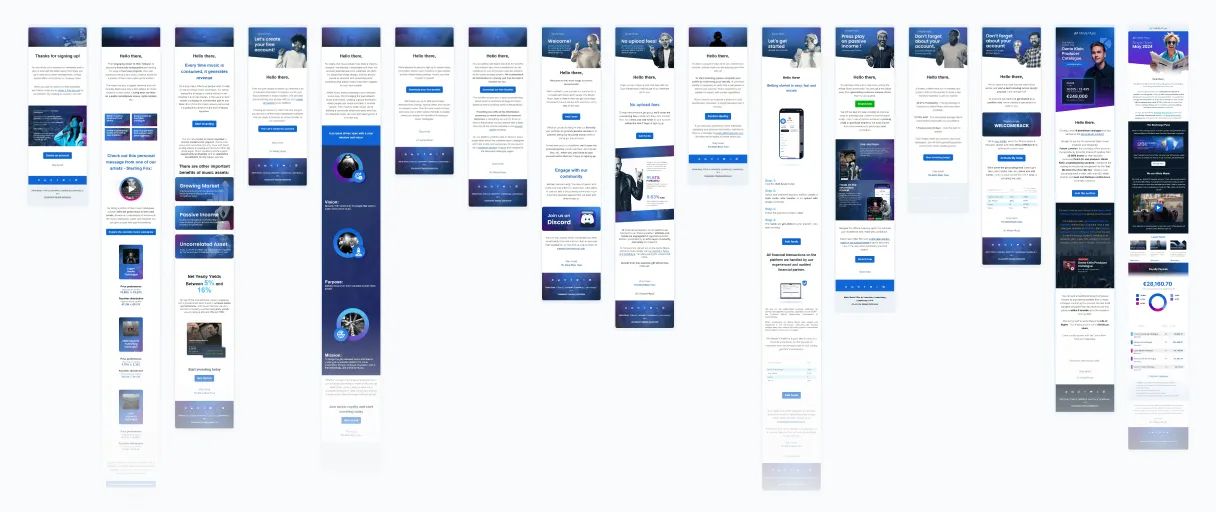
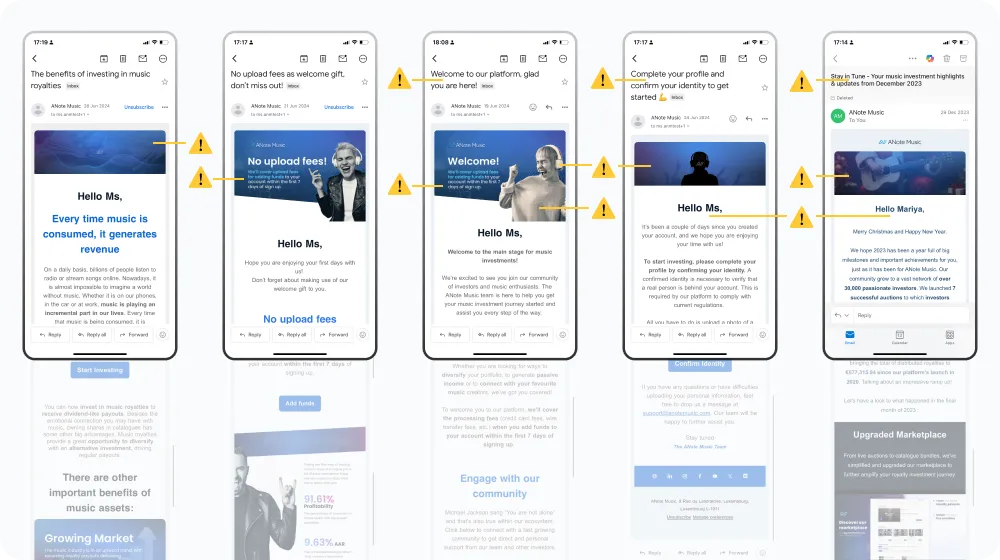

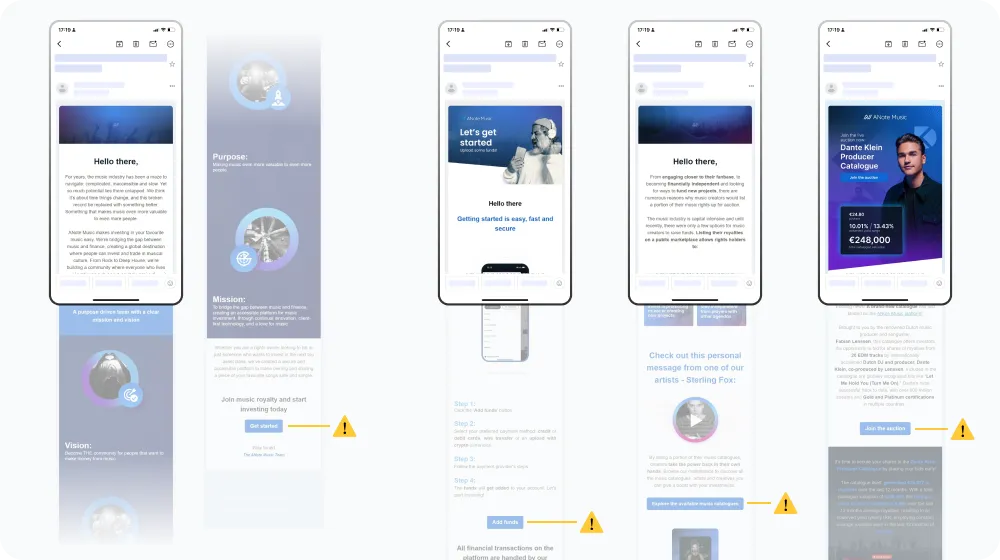
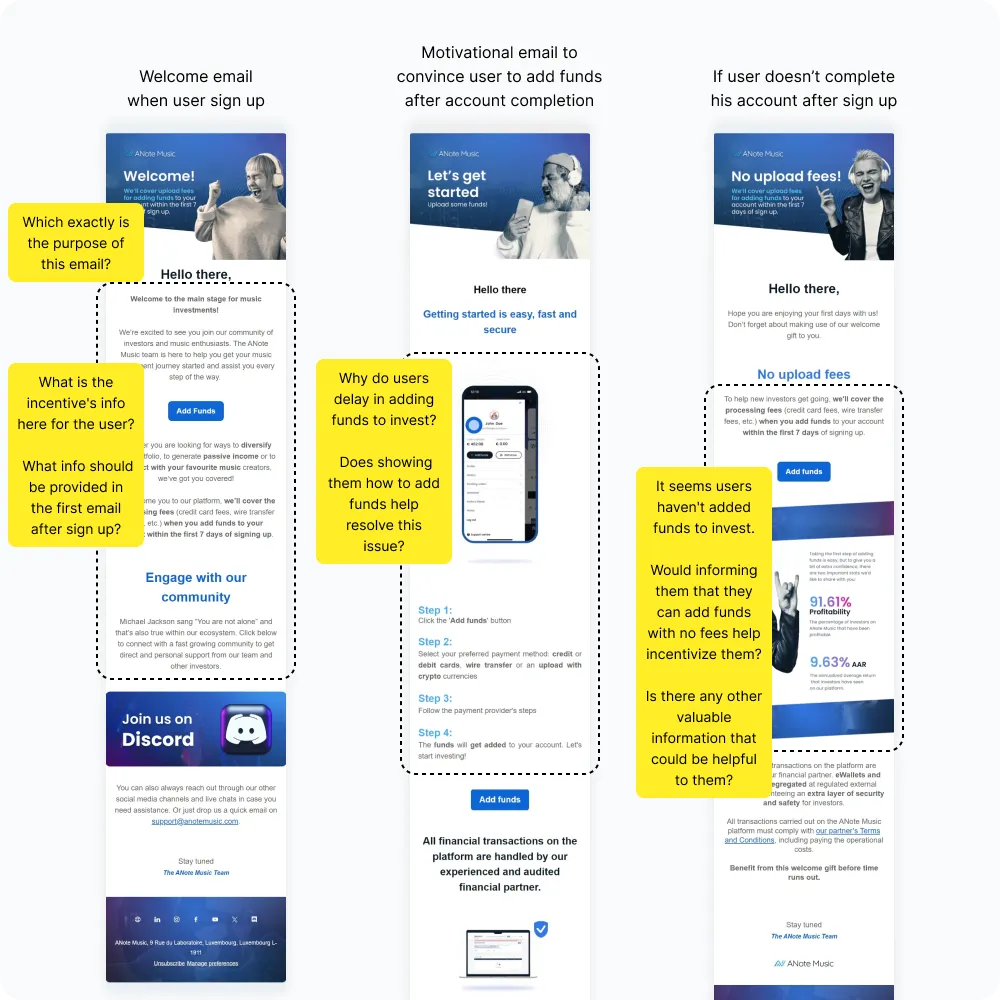
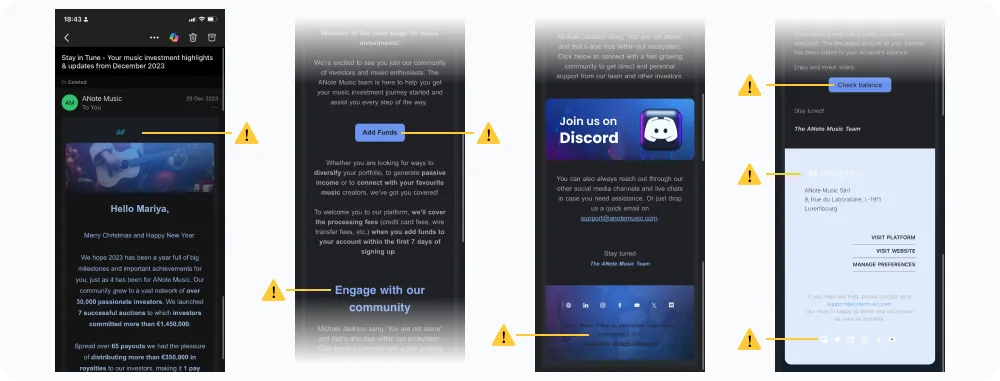
Emails were sent via two platforms:
The tools stayed the same, but content and structure of key user-facing emails were redefined, especially those that guided users after sign-up.
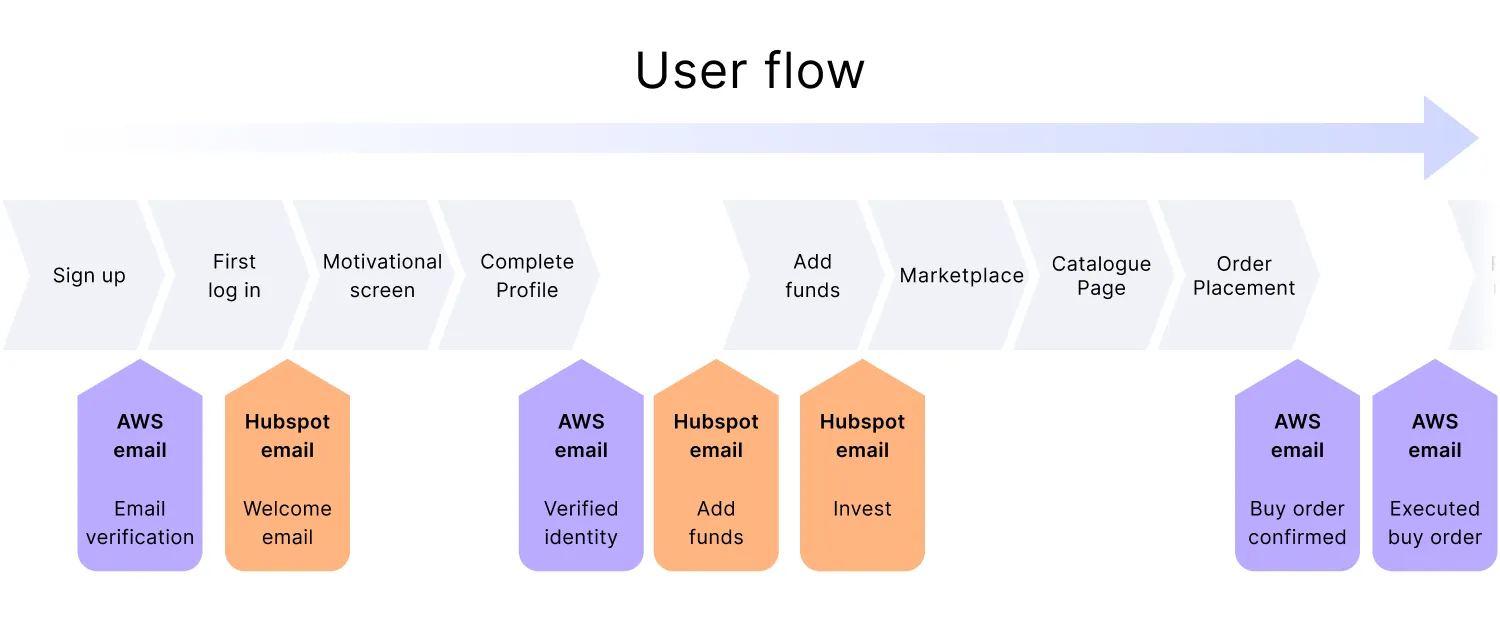
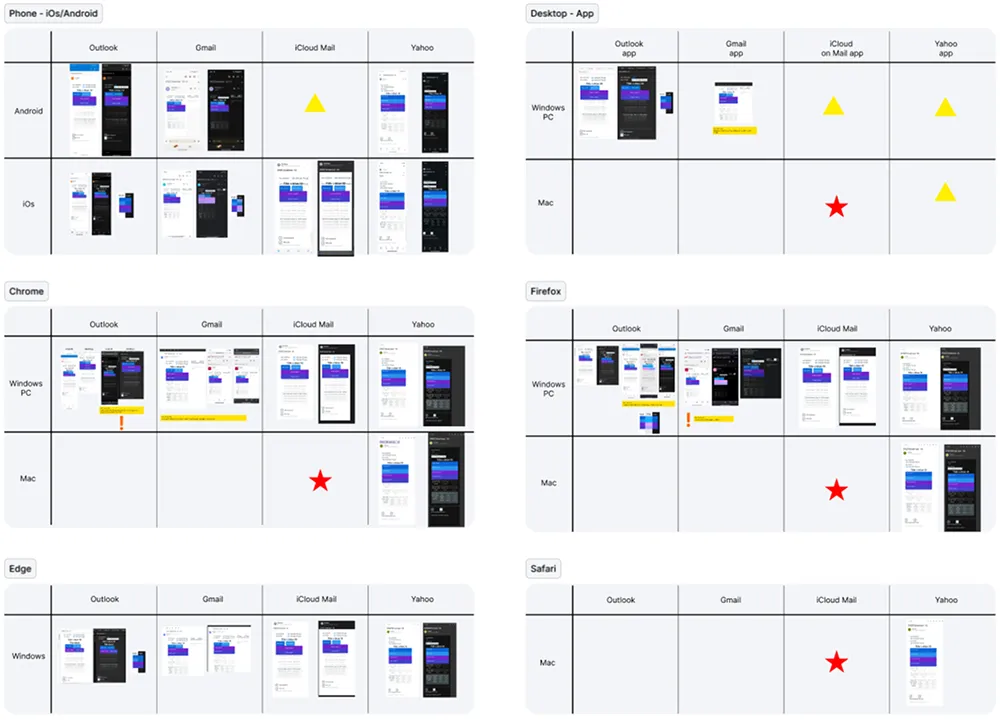
Emails were tested across devices to ensure readability and consistency in both light and dark mode. At this stage we defined:
To reduce cognitive load and increase clarity, I introduced the following standards:
To ensure emails were sent at the right time with the right message, I visualized the user journey inside platform alongside:

In a previous UX project, I identified the key information users need to receive prior to creating an account in order to improve their understanding, build trust in ANote Music, and encourage investment in music.
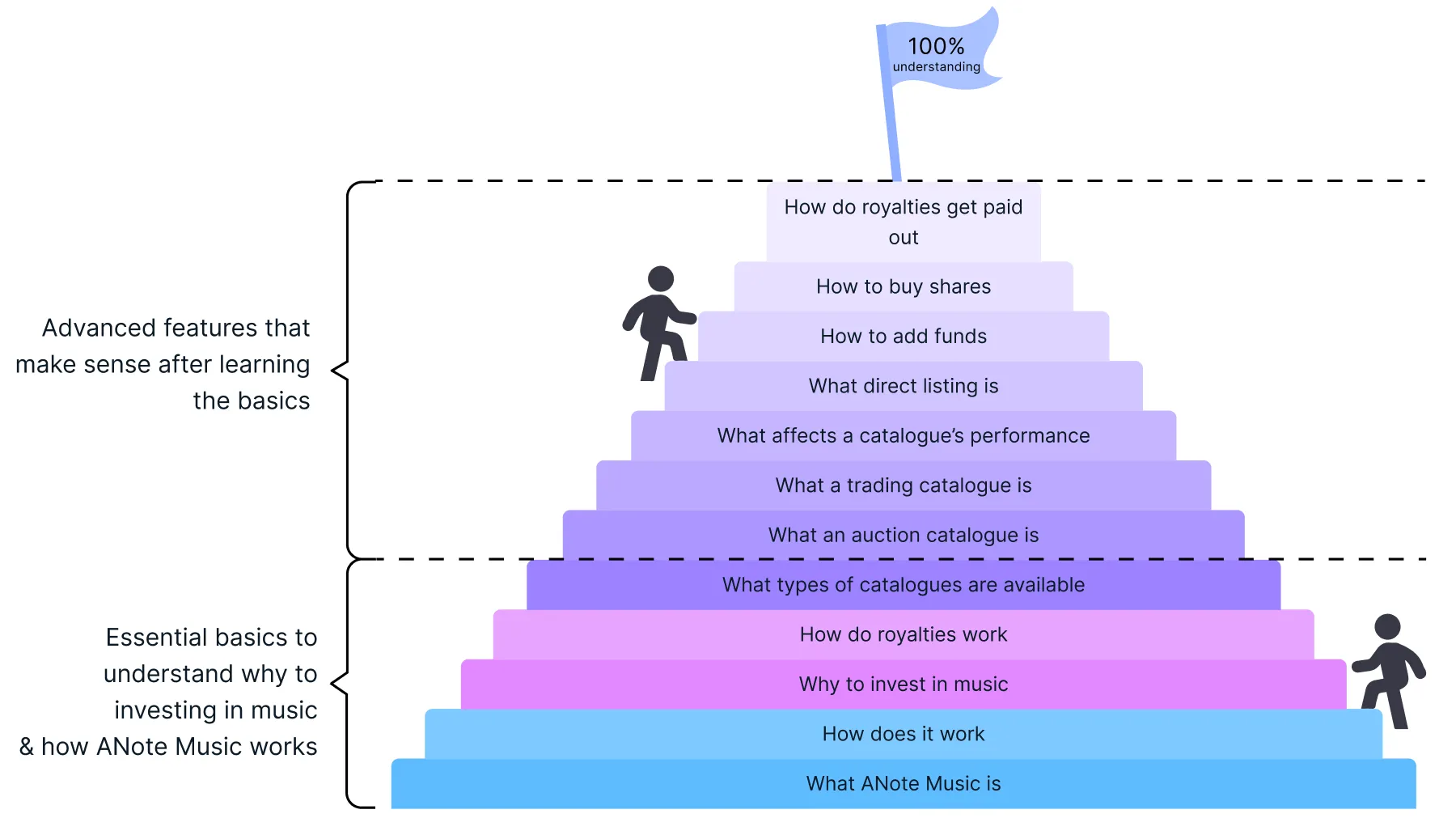
The combination of the user journey and the main information pillars allowed to:
To define the tone of voice it really helped the main defined personas. The tone should make users feel included, excited, and respected:
Tones avoided: technical finance terminology, trendy slang, metaphors or pushy sales language.
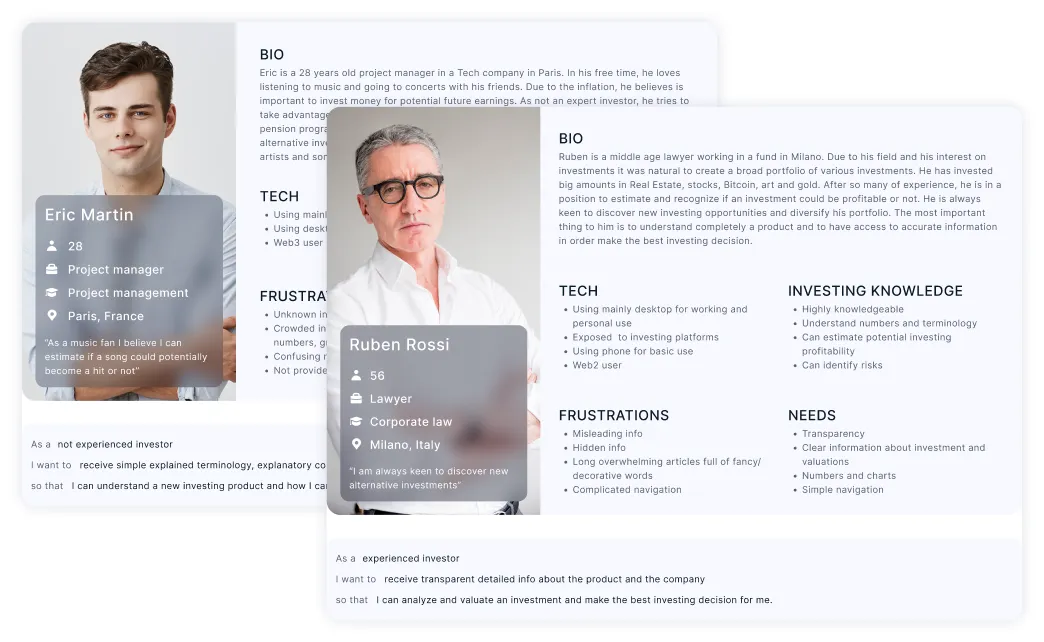
To support content and visual production, I delivered email wireframe template with:
Insights from previous testing showed that users often missed CTAs or were unsure about what action to take. In response, buttons were redesigned with clearer affordances and strategic placement throughout each page.
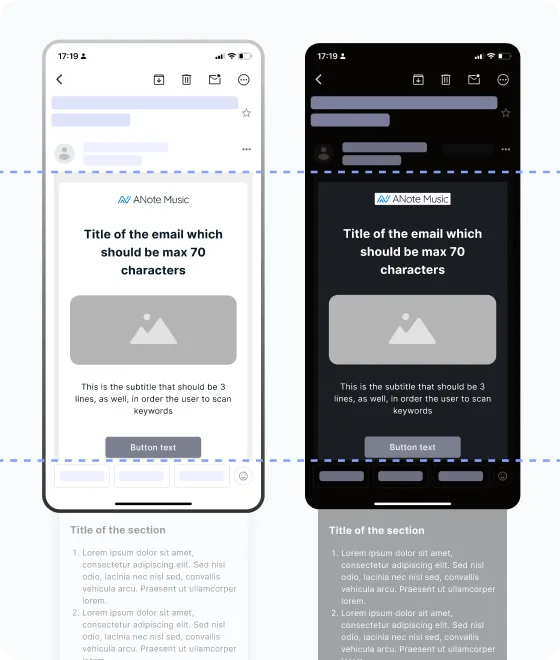

To provide an example on how to approach each email review, I analyzed the welcome email by following a structured UX process by combining all the above principles and guidelines. This example helped the marketing team to understand how to break the problem into smaller components, allowing them to focus on the purpose of each email and it’s information structure before focusing on visual design.

Based on my UX guidelines and wireframes, Irene (Marketing) and Geoffrey (Design) implemented the final email series:
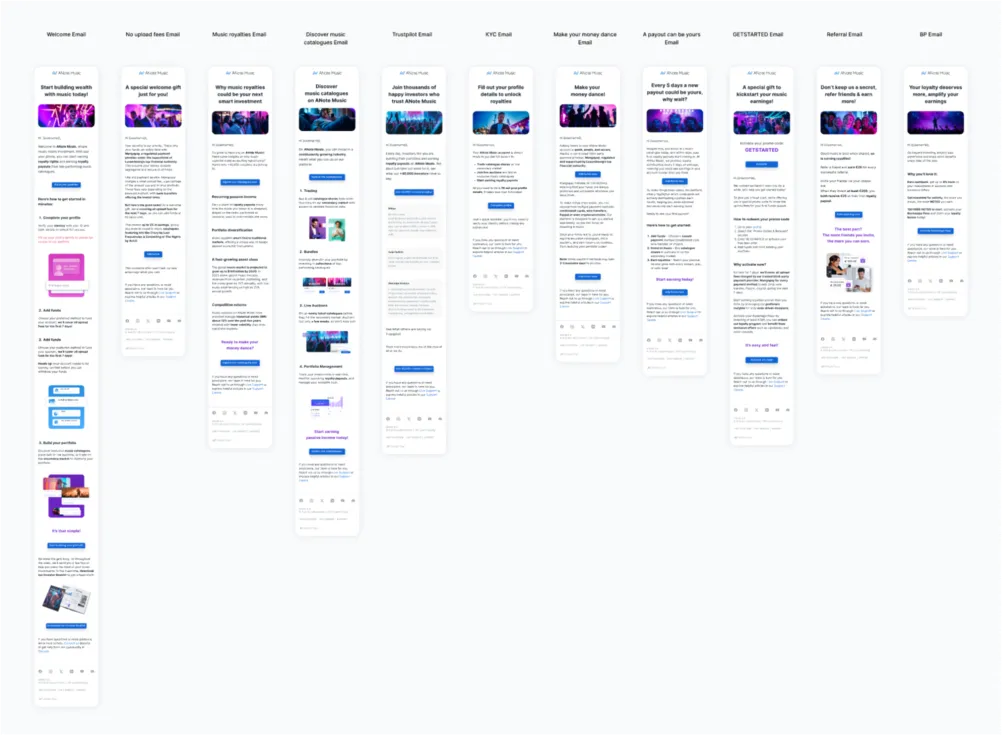
The improvements led to tangible performance gains:
This project reinforced how email communication is not just marketing - it’s UX. By approaching the email flow as part of the broader product experience, we closed key gaps in the user journey, aimed to build trust, and boosted investment activity. As a UX designer, this project allowed me to bridge strategy, psychology, writing, and visual direction - collaborating across teams to create a consistent and conversion-focused experience from website to inbox.